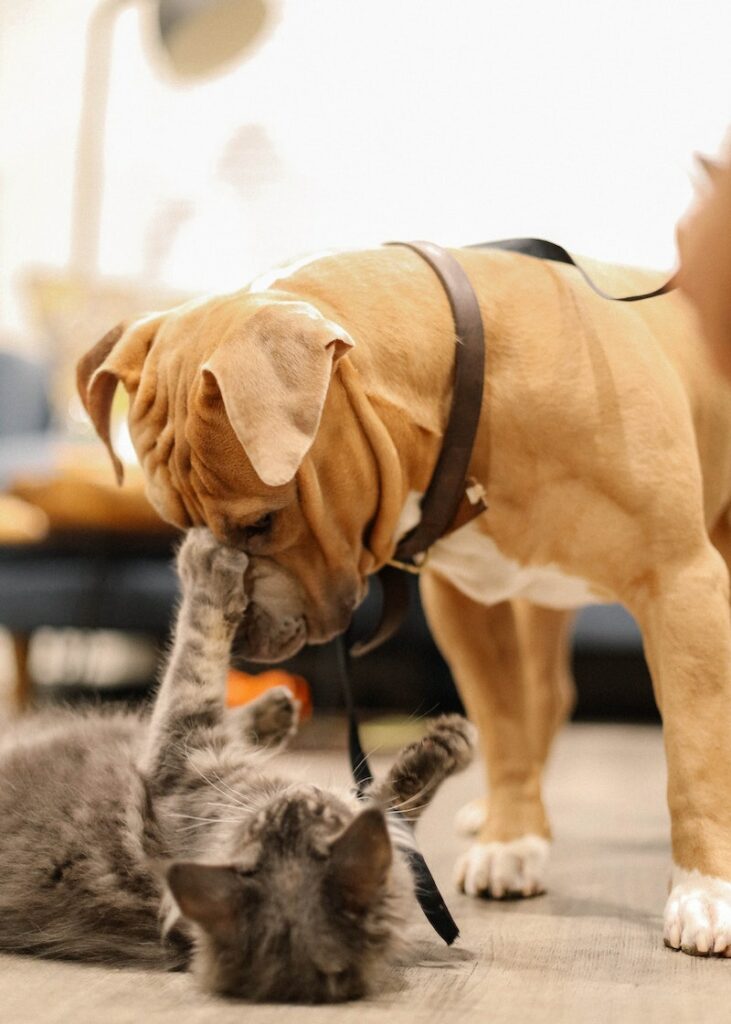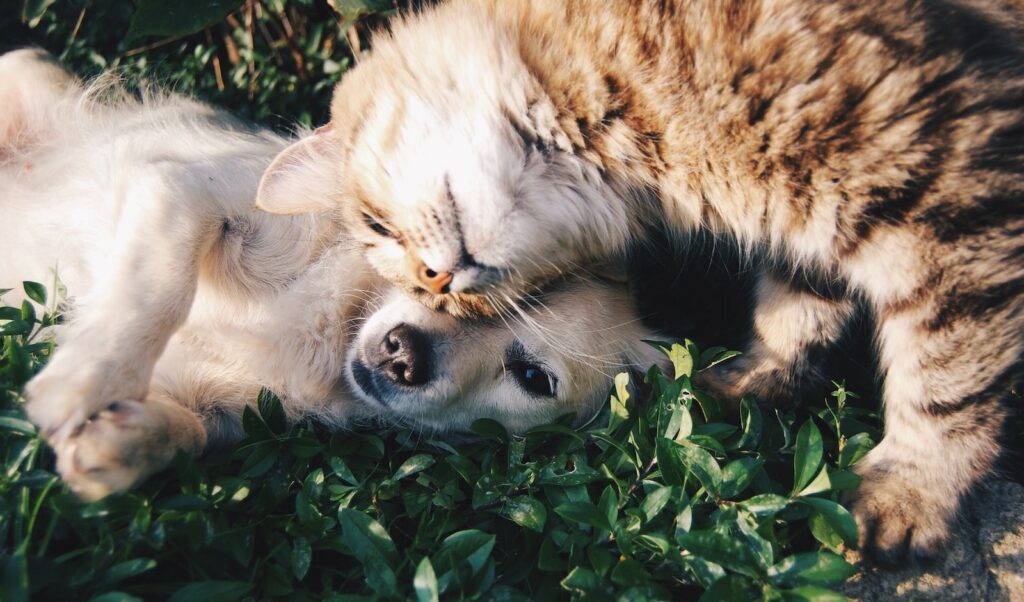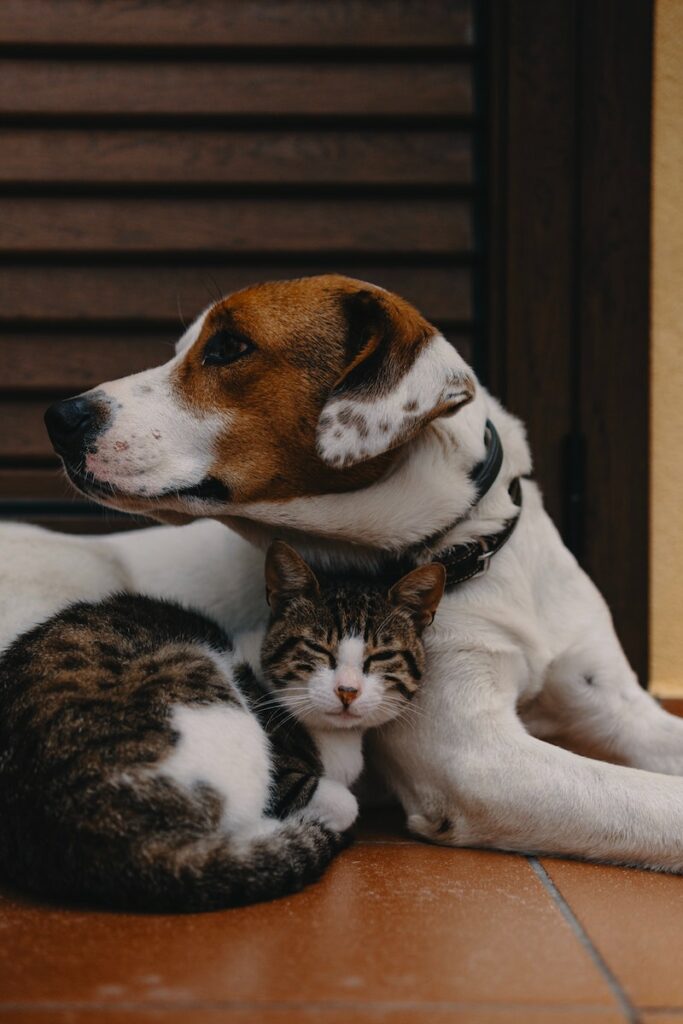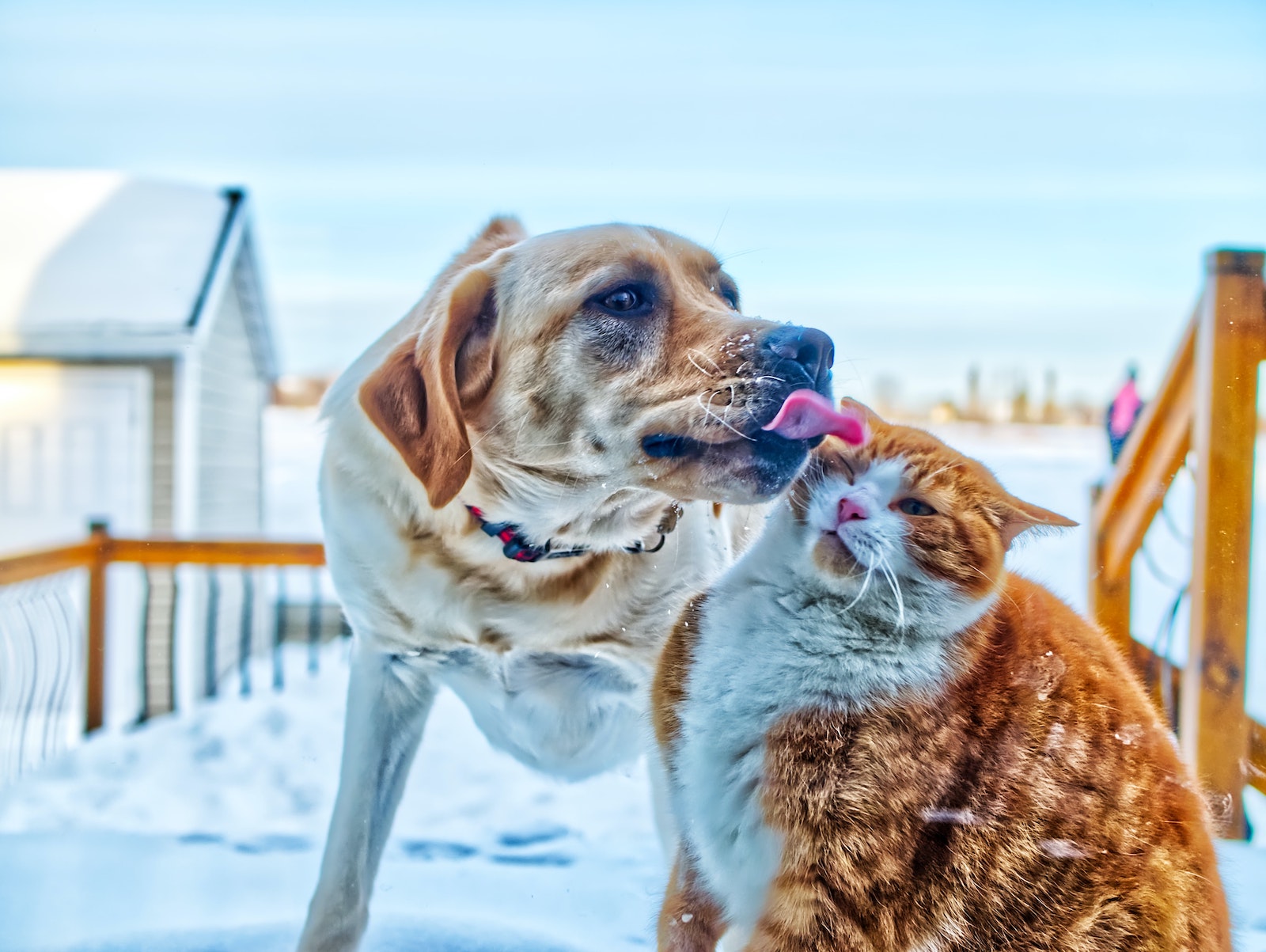Have you ever wondered if the saying that dogs and cats are mortal enemies is true, or maybe it’s just a myth? Stories, movies, and popular culture in general always show us a dog and a cat fighting, getting into trouble, and hating each other’s guts, but is there a logical explanation behind so much war? Why do dogs hate cats? Do they hate both each other? Let’s find out!
Do dogs really hate cats?
We couldn’t make such a categorical statement in this regard because, scientifically, there’s nothing that indicates that, by nature, a dog will hate any cat, and vice versa, so the answer is no. Many times we have indeed seen a cat hitting a dog or a dog chasing a cat that seems to flee for its life, but this doesn’t necessarily mean that they hate each other or that they are fighting.

So where does the famous phrase “they fight like cats and dogs” come from? Like many myths, this famous phrase has some truth and a lot of lies or misinformation, but don’t worry, because we took on the task of researching and finding the best answers for you.
Why do dogs hate cats? 4 reasons why cats and dogs don’t usually get along
Although they don’t hate each other as such, we can talk about certain factors that can interfere with the type of relationship they can have. These factors can help us explain why certain dogs seem aggressive to particular cats.
1. Socialization
Let’s start with the main reason any animal can get along poorly or at least not on the best terms with an individual of another species. As much as we love them, our pets are not people who see and understand the world the same way we do, so when a cat sees a dog for the first time in its life, it won’t understand what kind of animal it is and will identify it as something different that can be a threat, and the same goes for dogs.
Just as children learn to socialize and share early, dogs and cats have a window of opportunity during their first weeks of life to learn to mix, i.e., to live with other species (including humans).
When puppies and kittens are raised together early, they get used to their differences, can cope with them, and even create friendly relationships. On the other hand, if we want to introduce an older cat to live with an adult dog, it will likely be difficult or even impossible for them to adapt because they didn’t learn to be tolerant or friendly in time.
And, of course, they are different species that have never seen each other. It’s as if they put us in a room with someone we’ve never seen before and told us, “now, be best friends“!
2. Different languages
Indeed, a bark and a meow are not the same languages. Your cat will find it challenging to communicate and understand your dog’s bark and vice versa. It’s possible that if a dog gets along severely with a cat, it’s simply because he misinterprets the messages his feline friend wants to give him.

Let’s talk about body language, which is very important because it’s a very effective way to understand our pets. For example, everyone knows that if a dog wags its tail, it is because it is happy, but what about when a cat does it? Well, it means the opposite. A cat wags its tail when it is agitated and is likely to attack, so imagine the great conflict of a playful dog who sees his sibling cat wagging his tail. He will surely go after him to play, while the angry cat will try to run away or give him a good scratch.
This doesn’t mean that they hate each other. It simply means that sometimes communication fails.
3. Competitive nature
By nature, dogs and cats have different characteristics. While a dog tends to live with a pack and is more competitive, a cat prefers to hunt alone and is very territorial. These minor but fundamental differences can make a dog and a cat not get along because they constantly compete for food, water, toys, or space, especially if they feel obliged to share everything.
In these cases, it is essential that if you have a cat and a dog, each has space to eat, its bed, and its toys. In this way, the tension will be much lower, although, of course, from time to time, they may fight to try each other’s food to see if maybe it is better than theirs.
4. Different ideas for fun
If there is one thing these furries can agree on is that hunting is fun, the problem comes when we talk about the specific animal to be hunted. This is probably why people think dogs and cats hate each other.
While a cat is not a dog’s natural enemy or prey, these two domesticated species tend to live closer together in this modern world, often making them your only prey choice. And while a dog most likely won’t hunt a cat, it will give it a good chase, and I’ll tell you why.
Cats move stealthily, run and climb at high speed. These fast movements can trigger any dog’s hunting instincts, especially since they make them turn and pay attention, arousing curiosity. It is a matter of seconds before the dog will run off and try to chase it, but, it must be said, it is more for play than for the action of hunting for food.

As you can imagine, a cat that a dog is chasing will never stop to reflect on all that. It will only develop fear or aversion for that species that is chasing it, so it is very likely that when they are together, the cat will behave defensively, growling or throwing paws, and well, of course, the dog will not understand it and will also have a bad attitude against that rude cat, it’s a never-ending story.
Why do dogs hate cats? The bottom line
Dogs and cats don’t always get along badly. Some even learn to live together so well that they become inseparable friends. However, before they reach that point, they must overcome several communication barriers and learn to respect their limits. For example, a dog has to understand that a cat likes to spend time alone and that barking will be very noisy and annoying, just as a cat must learn to control its claws when playing.
There are many ways to get these pets to get along. For example, introduce them at an early age, delimit their spaces, and spend quality time with each other without them feeling that they are competing for your attention. Still, the most important thing is giving them time to adapt to the change. With patience and tolerance, everything can be achieved.
